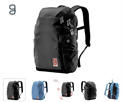
B2B Warehousing Organisation: Optimising Storage and Distribution for Business Success
March 18, 2025
https://pixabay.com/vectors/warehouse-storage-logistics-9079548/
Efficient warehousing is a critical component of business-to-business (B2B) logistics. As companies expand their supply chains and distribution networks, well-organised warehousing solutions ensure smooth operations, cost reductions, and improved customer satisfaction. Unlike business-to-consumer (B2C) logistics, B2B warehousing demands a strategic approach due to the bulk nature of goods, complex inventory management, and specific client requirements. This article explores key aspects of B2B warehousing organisation, covering warehouse layout, inventory management, technology integration, and best practices for operational efficiency.
Strategic Warehouse Layout
The layout of a B2B warehouse directly impacts efficiency, productivity, and cost management. A well-structured warehouse must accommodate large shipments, streamline material handling, and enable seamless movement of inventory.
Key elements of an optimised B2B warehouse layout include:
- Zoning and Segmentation – Designating areas for receiving, storage, picking, packing, and shipping ensures logical product flow.
- Racking and Shelving Systems – Pallet racking, mezzanine floors, and automated storage systems help maximise space and improve accessibility.
- Clear Aisles and Pathways – Proper aisle spacing allows for easy movement of forklifts and personnel, reducing bottlenecks.
- Cross-Docking Facilities – A cross-docking strategy minimises storage time by transferring goods directly from inbound to outbound shipments.
By structuring warehouses for efficiency, businesses can reduce handling times and optimise resource allocation.
Effective Inventory Management
Inventory management plays a crucial role in B2B warehousing by ensuring stock levels align with demand while preventing overstocking or shortages. Effective management involves balancing supply and demand dynamics through various strategies:
- ABC Analysis – Categorising inventory into A (high-value, low-quantity), B (moderate value and quantity), and C (low-value, high-quantity) ensures priority management.
- Just-In-Time (JIT) Inventory – This approach minimises stockholding costs by receiving goods only when needed for immediate use.
- Cycle Counting – Regular inventory audits help maintain accuracy and reduce discrepancies.
- Demand Forecasting – Predicting future demand based on historical data and market trends prevents stock imbalances.
- Specialised Handling Equipment – Using tools like a durable drum trolley ensures the safe and efficient transport of heavy cylindrical containers, reducing manual strain and improving warehouse safety.
B2B warehouses that master inventory control experience reduced costs, enhanced efficiency, and improved order fulfilment accuracy.
Technology Integration in B2B Warehousing
Technological advancements have transformed B2B warehousing by improving operational control, accuracy, and productivity. Some key technologies include:
- Warehouse Management Systems (WMS) – A WMS provides real-time tracking, optimises inventory placement, and enhances fulfilment speed.
- Radio Frequency Identification (RFID) and Barcoding – These technologies ensure precise tracking, reducing errors in stock management.
- Automation and Robotics – Autonomous mobile robots (AMRs), conveyor belts, and automated guided vehicles (AGVs) boost efficiency in large-scale warehouses.
- Internet of Things (IoT) and Sensors – IoT-enabled devices provide real-time data on storage conditions, tracking shipments and warehouse climate control.
- Cloud-Based Data Analytics – Centralised data storage allows businesses to analyse performance metrics, optimise workflows, and forecast future needs.
Adopting these technologies enhances transparency, efficiency, and overall warehouse performance in B2B logistics.
Best Practices for B2B Warehouse Operations
To maintain seamless operations, businesses must implement best practices tailored to B2B warehousing. Some essential strategies include:
- Streamlined Order Fulfilment Processes – Efficient pick-and-pack methods, such as batch picking or zone picking, minimise errors and improve turnaround times.
- Sustainable Warehousing Initiatives – Implementing energy-efficient lighting, recyclable packaging, and eco-friendly logistics reduces operational costs and environmental impact.
- Workforce Training and Safety Measures – Ensuring employees are well-trained in warehouse protocols and safety procedures prevents accidents and enhances productivity.
- Collaboration with Third-Party Logistics (3PL) Providers – Partnering with 3PL companies enables scalability, cost savings, and access to advanced warehousing capabilities.
- Performance Monitoring and Continuous Improvement – Key performance indicators (KPIs), such as order accuracy, fulfilment speed, and inventory turnover rates, help refine operations.
Implementing these best practices enhances operational agility and ensures the warehouse meets business objectives effectively.
Conclusion
B2B warehousing organisation is a vital aspect of supply chain management, directly impacting business efficiency and customer satisfaction. By focusing on strategic warehouse layouts, inventory management, technology adoption, and best operational practices, businesses can create a seamless and cost-effective warehousing system. As the industry evolves, companies that invest in innovation and continuous improvement will maintain a competitive edge in the B2B logistics landscape.
Leave a Reply
You Might Like Also

How To Speed up OSHA 30 Online In Minimum Time

The Importance of Color Schemes in Dubai's Arabic Majlis Design

KYC AML in Fraud Detection: Protecting Fintech Transactions










